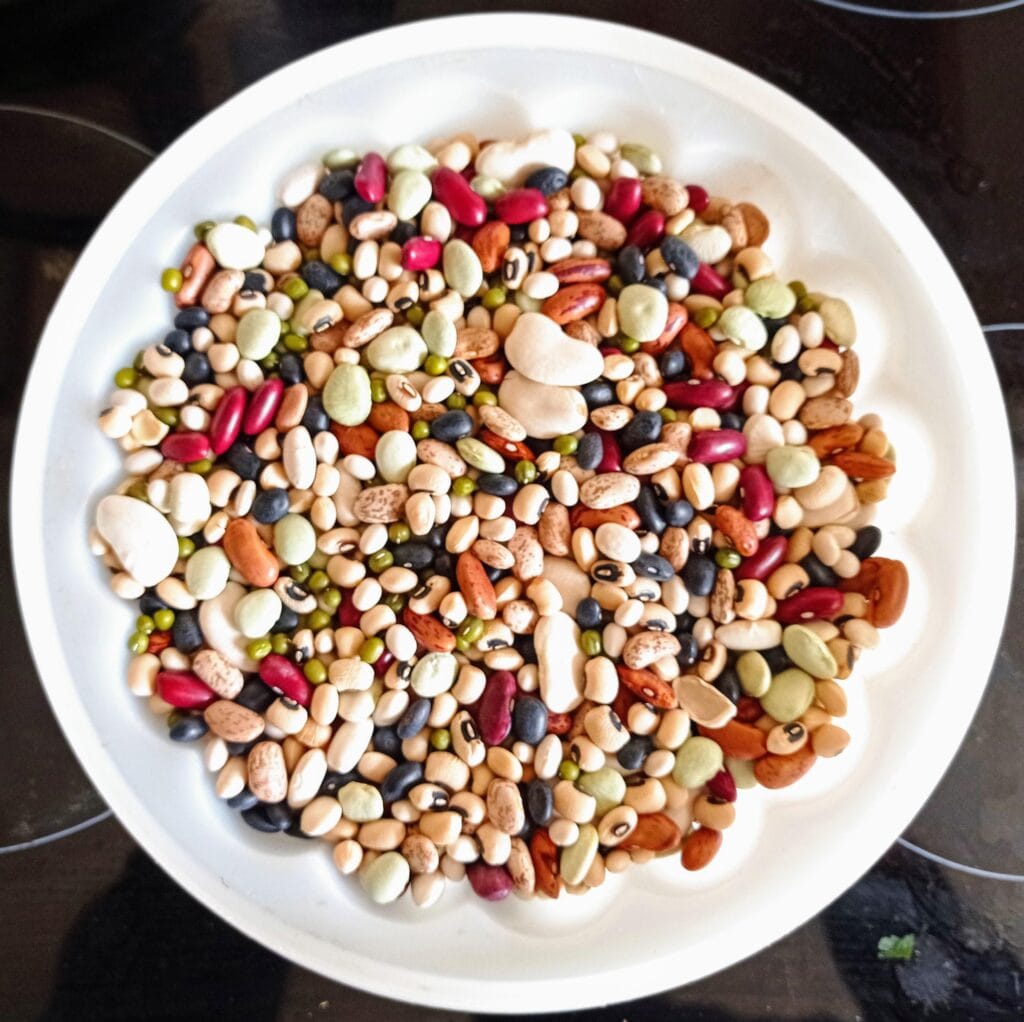Introduction
White beans are a staple in many kitchens worldwide, offering a healthy, versatile, and affordable ingredient for countless recipes. However, when it comes to Northern white beans vs white beans, many people wonder how they differ. Are Northern white beans the same as white beans? This article examines their characteristics, differences, culinary uses, and nutritional benefits to help you decide which type suits your cooking needs best.
Table of Contents
What Are White Beans?

White beans belong to the legume family and are known for their mild flavor, creamy texture, and versatility. They include several varieties, such as Navy beans, Great Northern beans, Cannellini beans, and Baby Lima beans. Because they are so adaptable, white beans are used in countless recipes worldwide.
Key Characteristics of White Beans
- Size and Texture: The size and texture vary by type, ranging from small and soft Navy beans to larger and creamier Cannellini beans.
- Nutritional Value: White beans provide a rich source of protein, fiber, and essential nutrients such as iron, magnesium, and potassium.
- Versatility: Their neutral taste allows them to work well in soups, stews, salads, dips, and casseroles.
- Availability: White beans are readily available in both dried and canned forms, making them affordable and accessible.
Popular Uses
White beans are a staple in hearty soups like Tuscan White Bean Soup. Additionally, they are ideal for purees, spreads, and dips, as explained in Using White Beans as a Thickener.
What Are Northern White Beans?
Northern white beans, also called Great Northern beans, are one of the many types of white beans. These medium-sized beans have a slightly firm texture and a mild, nutty flavor, making them a favorite for many recipes.
Key Characteristics of Northern White Beans
- Size: Medium-sized, larger than Navy beans but smaller than Cannellini beans.
- Texture: Their firm yet tender texture makes them ideal for dishes where beans need to retain their shape.
- Flavor: Northern white beans have a mild, nutty flavor that complements both rich and light dishes.
Nutritional Benefits
Like other white beans, Northern white beans are:
- High in protein and fiber, which support digestion and overall health.
- Rich in vitamins and minerals such as magnesium, potassium, and iron.
- Low in fat, offering a heart-healthy alternative to animal-based proteins.
Northern White Beans vs White Beans: The Key Differences

The term “white beans” refers to several varieties, while “Northern white beans” specifically points to Great Northern beans. To fully understand Northern white beans vs white beans, here’s how they compare:
| Feature | Great Northern Beans | White Beans (General) |
|---|---|---|
| Size | Medium | Varies: Small (Navy) to large (Cannellini) |
| Texture | Firm and holds shape | Ranges from creamy (Cannellini) to soft (Navy) |
| Flavor | Mild, nutty | Mild, with slight variation by type |
| Best Uses | Soups, stews, casseroles | Dips, salads, purees, soups |
Key Takeaways
- Specificity: Northern white beans are just one type of white bean.
- Texture: Northern white beans are firmer than Navy beans, which become creamy, and Cannellini beans, which are softer and creamier.
- Flavor: While all white beans have a mild flavor, Great Northern beans offer a nuttier undertone.
When comparing Northern white beans vs white beans, Great Northern beans excel in recipes where the beans need to maintain their structure.
Culinary Applications of Northern White Beans
Northern white beans are highly versatile, so they can be used in a wide range of dishes. Here are some common uses:
1. Soups and Stews
Their firm texture makes Northern white beans a top choice for hearty soups like Tuscan White Bean Soup and stews that simmer for long periods.
2. Casseroles and Bakes
Since Northern white beans retain their shape, they work perfectly in layered casseroles or baked dishes with vegetables and cheeses.
3. Purees and Dips
Blended Northern white beans create smooth, creamy spreads and often serve as a natural thickener for soups. Learn more about this in Using White Beans as a Thickener.
4. Salads
Their firm texture makes them stand out in cold salads, especially when paired with fresh herbs, olive oil, and citrus dressings.
Exploring Other Varieties of White Beans
Although Northern white beans are popular, other varieties bring unique qualities to recipes:
- Navy Beans
- These small, creamy beans are ideal for baked beans and soups.
- Cannellini Beans
- Their larger size and creamy texture make them perfect for Italian dishes like What is Tuscan Bean Soup Made Of?.
- Baby Lima Beans (Butter Beans)
- With a buttery and slightly sweet flavor, they are great for purees or as a side dish.
Environmental Impact of White Beans
White beans, including Northern white beans, are an environmentally sustainable choice.
- Low Carbon Footprint: Producing white beans generates fewer greenhouse gases than animal-based proteins.
- Soil Health: White beans enrich the soil by fixing nitrogen, reducing the need for synthetic fertilizers.
Nutritional Comparison of White Bean Varieties
Here’s how common white bean varieties compare per 1 cup (cooked):
| Nutrient | Great Northern Beans | Navy Beans | Cannellini Beans | Baby Lima Beans |
|---|---|---|---|---|
| Calories | 209 kcal | 255 kcal | 225 kcal | 216 kcal |
| Protein | 14.7 g | 15 g | 15 g | 14.7 g |
| Fiber | 12.4 g | 19 g | 11.3 g | 13.2 g |
Conclusion
Understanding the distinctions between Northern white beans vs white beans allows you to choose the best type for your recipes. Northern white beans (Great Northern beans) stand out for their firm texture and mild, nutty flavor, making them perfect for soups, casseroles, and salads. Whether you’re making Tuscan White Bean Soup or experimenting with dips, these beans are a versatile and nutritious addition to any kitchen.
